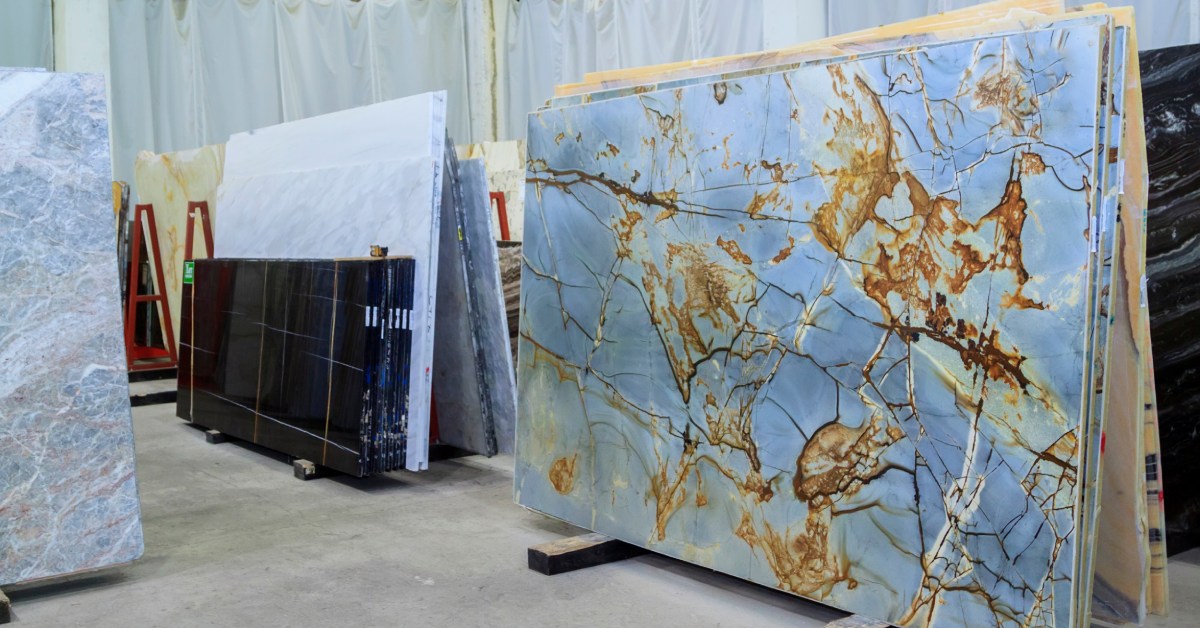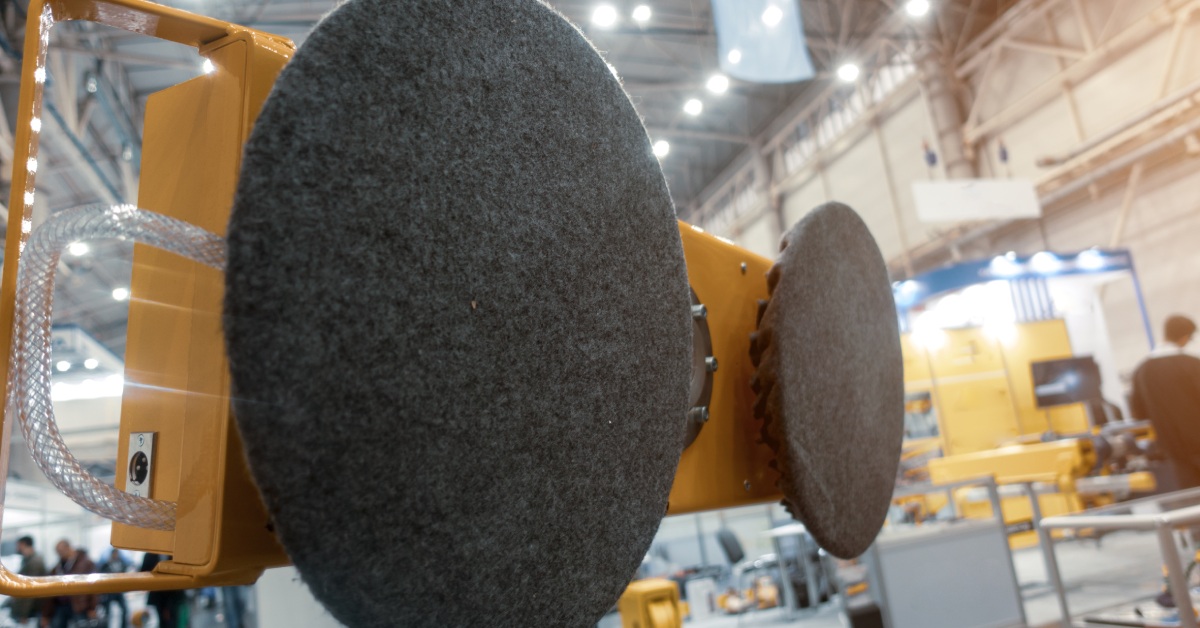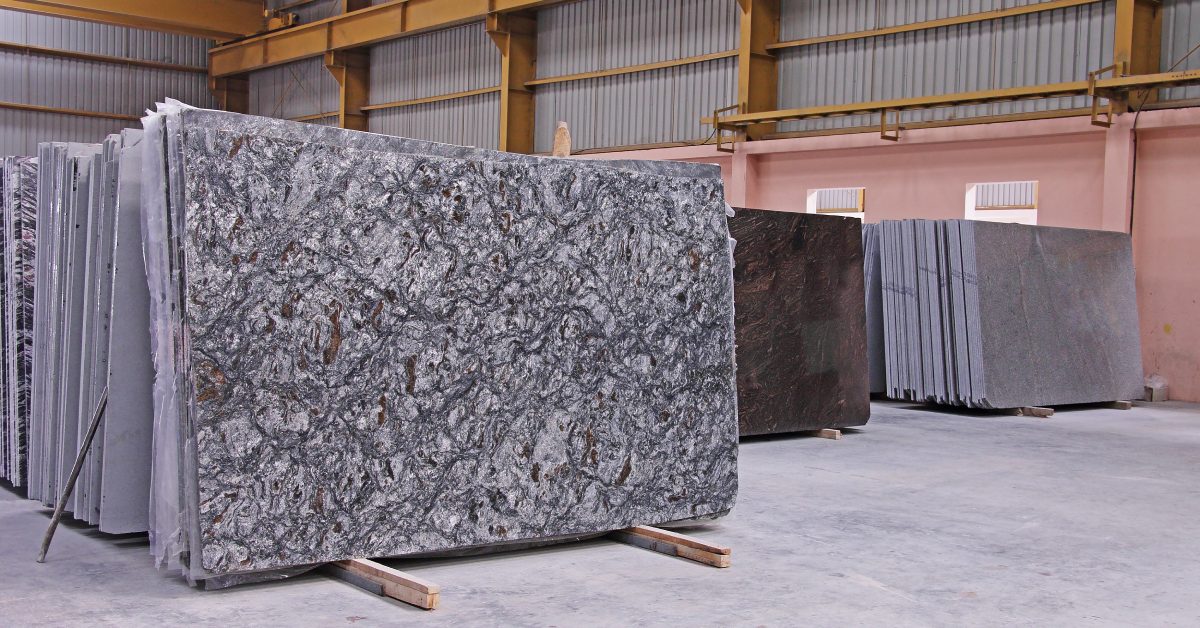A Step-by-Step Guide to Cutting Porcelain Tile
Do you need to cut porcelain tiles? It’s a delicate process, but we can show you how to do it. Our guide will walk you through each step in the process here.

FREE Shipping Over $250 (Freight/Pallet Shipments Not Included)
Do you need to cut porcelain tiles? It’s a delicate process, but we can show you how to do it. Our guide will walk you through each step in the process here.
While stone countertops are attractive, they’re not immune to problems. Our guide explains how to solve some of the most common stone countertop issues here.
If you’re looking to learn more about tile cutters, we can help. Our beginner’s guide to using a tile cutter breaks down what you need to know.
Diamond blades are powerful cutting tools, yet they require careful handling. We will explain the dos and don’ts of using diamond blades here.
The safe handling of heavy and delicate stone slabs and tiles requires reliable tools. We explain the types of lifting equipment for material handling here.
Using the wrong cleaning products on your countertops could do more harm than good. Here, we explain what to avoid when cleaning stone countertops.
Do you have marble countertops? Then, you must care for them to ensure their longevity. We explain the best tips for maintaining marble countertops here.
Polishing is integral to the care and maintenance of natural stone counters. Here, we explain how to polish natural stone countertops step by step.
One of the most popular materials in stone fabrication for fabricators and homeowners is quartzite. While quartzite offers many advantages for homeowners and designers, it still requires much care and attention to ensure its durability and luster. Below, we’ll tackle everything you need to know about maintaining quartzite surfaces and more.
Quartzite is a metamorphic rock that originates from pure quartz sandstone. Through intense heat and pressure, it transforms into a robust, non-porous material that combines beauty with strength. Its stunning patterns and color variations make it a sought-after choice for countertops, flooring, and other luxurious applications.
Understanding the properties of quartzite is crucial for stone fabricators. It’s not just about aesthetics; quartzite’s composition ensures it withstands wear over time, making it ideal for high-traffic areas and demanding installations. Fabricators appreciate quartzite for its looks and its performance.
Quartzite may look like any other stone surface for countertops and floors to some, so what sets it apart from other materials? Primarily, its durability, heat resistance, and vibrant appearance all make it a sought-after stone material for homes and buildings.

Few stones rival quartzite when it comes to durability. Its density and hardness make it resistant to scratches and chips, qualities homeowners value for kitchens and bathrooms. These properties translate to long-term customer satisfaction for fabricators, as clients can enjoy their quartzite features without the constant worry of damage or wear. This durability is a selling point that can set your services apart in the competitive market of stone fabrication.
Another reason many love quartzite countertops for their kitchens is their resistance to high temperatures. Unlike other materials that might suffer under intense heat, quartzite surfaces can handle hot pots and pans without blistering or cracking.
This heat resistance makes it an excellent choice for kitchen countertops. Highlighting this aspect can persuade hesitant customers who prioritize aesthetics and functionality in their homes or commercial spaces.
Aesthetically, quartzite’s natural veining and color variations offer a sophistication unmatched by engineered stones. Each slab of quartzite is unique, providing a one-of-a-kind look that appeals to clients seeking exclusivity and elegance.
Stone fabricators should promote this aspect of quartzite to attract a clientele that values bespoke design solutions. Quartzite fits seamlessly into any design narrative, whether it’s a minimalist modern kitchen or a lavish traditional bathroom.
Now that we’ve covered why maintaining quartzite surfaces are so popular, it’s time to learn the basics of quartzite stone maintenance. Homeowners should know a few things to keep their quartzite countertops looking pristine for years, from sealing to polishing and regular cleaning.
Sealing is one of the most critical aspects of quartzite maintenance. Although quartzite is less porous than some stones, sealing enhances its resistance to stains and spills, ensuring its longevity and aesthetic appeal. Fabricators should recommend sealing quartzite surfaces once a year or more frequently if they know the homeowners will use the stone heavily.
Along with regular sealing, using epoxy for countertops can further enhance their durability and functionality. Epoxy provides a strong, protective layer that can fill in microcracks and provide additional resistance against heat and impact. This type of sealant helps maintain the countertops’ appearance and extends their lifespan.
Everyone wants their quartzite countertop to shine. However, it’ll lose its luster if you don’t polish it regularly enough. You don’t have to spend much money on expensive polishes to make your quartzite countertops gleam.
White vinegar is an excellent polishing agent for quartzite surfaces—and you can make the agent yourself at home. Fill a bottle with one-quarter of vinegar and the rest with water, and you’ll have a polishing agent ideal for quartzite surfaces!
Despite quartzite’s resilience, improper care can lead to avoidable damage. Fabricators must educate clients on the best practices to maintain this beautiful stone’s integrity. Owners should avoid these common mistakes that many make with their quartzite countertops.

It’s best to avoid harsh, acidic cleaners when cleaning the quartzite surface. Although vinegar is an acceptable polishing agent for quartzite, homeowners should still be careful when using it to prevent etching on the surface. Dilute the vinegar significantly and wipe it off thoroughly to ensure the acidic vinegar polishes and cleans without damaging the surface.
Generally, it’s best to use gentle, pH-neutral cleaners as a primary choice to preserve the stone’s finish. These cleaners will keep your countertops looking pristine without leaving any damage or etching on the surface.
Of course, careful transportation and installation is also important to ensure there’s no damage. While quartzite is strong, it is not immune to chipping.
Fabricators should ensure that all personnel involved in transportation and installation know proper handling techniques. By taking these precautions, you can minimize the risk of damage and guarantee a flawless finish for your clients.
While quartzite surfaces are quite durable, that doesn’t mean owners can become complacent and neglect their maintenance duties. Over time, dirt and grime can accumulate, dulling the stone’s natural luster and potentially leading to long-term wear. Owners should clean their quartzite surfaces regularly with the appropriate methods, such as using warm water and a mild detergent.
Promptly addressing small spills can prevent potential staining and ensure the surface remains pristine. Emphasizing the importance of consistency in upkeep enhances customer satisfaction and showcases your commitment to long-lasting quality and care.
While homeowners can manage some maintenance tasks, seeking professional services for more intensive care comes highly recommended. Professionals offer deeper cleaning and inspections, addressing potential issues before they escalate.
Although DIY maintenance is suitable for routine cleaning and minor touch-ups, professionals have specialized tools and products that can effectively rejuvenate stone surfaces. Detroit Diamond Tools has practically everything you need to keep your quartzite or other stone surfaces clean and pristine, from polishing pads to adhesives and much more. Just ask one of our stone surface experts what’s best for your counter, and we’ll point you in the right direction.
Maintenance is crucial to your stone’s appearance and durability, whether you’re a homeowner with quartzite countertops or an installer with a storage of quartzite slabs to care for. There’s much that goes into maintaining quartzite surfaces, but regular maintenance and careful attention are always the priority.
Detroit Diamond Tools can help if you’re interested in learning more about maintaining quartzite surfaces or maintenance supplies. Browse our inventory of epoxy for countertops, general equipment, and other supplies for handling and maintaining quartzite surfaces, or contact our staff to speak with a stone expert today.
Properly maintaining quartzite countertops involves regular cleaning, sealing, and polishing. Clean the surface using a pH-neutral cleaner and avoid harsh chemicals. Seal the surface annually to protect it from stains. Regular polishing will help maintain its natural luster and beauty.
Quartzite surfaces should be sealed at least once a year to protect them from stains, dirt, and spills. If the countertop is heavily used, sealing more frequently can help maintain its durability and aesthetic appeal.
Vinegar can be used as a polishing agent for quartzite, but it should be diluted significantly. While it’s effective for cleaning, undiluted vinegar can cause etching on the stone surface. Always use a gentle, pH-neutral cleaner for regular cleaning to avoid damaging the stone.
Common mistakes include using harsh cleaning agents, neglecting regular maintenance, and improperly handling quartzite during installation. Always use pH-neutral cleaners, perform routine cleaning, and ensure proper handling during installation to avoid damage.
While DIY maintenance like cleaning and light polishing can be done at home, hiring professionals for deeper cleaning and periodic inspections is highly recommended. They have the right tools and expertise to keep your quartzite surfaces in top condition.
Whether you’re in the stone-cutting, tiling, construction, or home-remodeling industry, effectively handling stone slabs is crucial to success and stone slab lifter safety. But safely moving these large stone slabs and their immense weight is easier said than done.
To move these slabs, workers use lifters of many kinds that can handle hundreds and thousands of pounds without a problem. But while these lifters make the movement of heavy slabs easy, operators must train with them to safely and effectively use them. Below, we’ll go over how to safely use a lifter for stone slab handling, explain safe lifting best practices and maintenance tips, and more.
Stone slabs are both heavy and delicate, presenting unique challenges when it comes to management. Whether you’re working with marble, granite, or limestone, each slab’s substantial weight and inherent brittleness demand a high level of respect and caution. Mishandling these materials can cause cracked slabs that require costly replacements and create significant delays in project timelines.
Furthermore, the handling of these large and awkwardly shaped slabs is also dangerous if not done correctly. Back injuries, strains, and other musculoskeletal issues are alarmingly common among workers who take on the burden of manual handling without proper techniques or equipment. You must understand these risks and implement safer practices, such as using appropriate lifting tools, ensuring adequate team support, and providing training on proper handling techniques.
The proper handling of lifting equipment is integral to the safe movement and management of these large, heavy stone slabs. For workers in the stone, tiling, and construction industry, knowing and understanding this vital material handling equipment is critical to project success and safety.
To start, we’ll examine some of the different types of lifters and equipment that workers commonly use to handle stone slabs safely.

The most common type of lifter for stone slab handling is a vacuum lifter. These lifters are specifically for handling flat surfaces, so they’re ideal for large, flat slabs.
They use suction technology to lift and maneuver stone slabs securely. This type of lifter minimizes the risk of damage during transport. The ease of use and reliability of vacuum lifters make them a popular choice in stone handling.
Another common type of lifter for stone slabs is the clamp lifter. Clamp lifters provide secure grips on the edges of stone slabs and are ideal for lifting slabs that don’t have a flat surface or are challenging to grasp. Clamp lifters offer versatility and strength, making them suitable for a variety of applications in the stone industry.
Another way to handle stone slabs is with forklifts, but they require specific attachments for the precise and gentle handling of these brittle materials. You may use specialized attachments, such as fork extensions or clamp arms, to carefully handle stone slabs. A forklift operator can apply these attachments to practically any standard forklift for easy and stable support of stone slabs.
Now that we’ve explained the basics of these lifters, you need to know how to safely use this equipment for stone slab handling. As with using any industrial equipment machines, the best practices boil down to diligent inspections, proactive maintenance, and proper training.
Before starting any lifting operation, inspect the lifter thoroughly for any signs of wear and tear. Look for frayed cables, damaged hooks, or any other defects.
Stone slabs can weigh over 1,000 pounds, so a lifter must be in tip-top shape to handle such a weight safely and carefully. Regular inspections are vital to ensure stone slab lifter safety. If you notice any issues, don’t use the lifter until it receives the necessary repairs or part replacements.
After confirming the lifter is in quality condition, position the machine on the slab. For vacuum lifters, ensure that the suction plates align centrally and evenly on the slab’s surface, providing optimal grip and distributing the load uniformly. This central alignment helps in minimizing any potential tilt or imbalance during lifting.
Clamp lifters require careful positioning at the slab’s edges, ensuring that the grips hold the sides securely. Adjust the clamps so they firmly but gently grip the slab, preventing slippage while avoiding any excessive pressure that could damage the stone. Both types of lifters should be at a height and angle that aligns with the equipment manufacturer’s guidelines, considering the slab’s dimensions and weight for secure handling.
With the lifters in a secure and optimized position, you can operate the controls. Avoid sudden movements that can destabilize the load. Instead, lift the slab steadily and at a controlled pace to ensure safety and maintain control over the lifter and the load.
As with the handling of any industrial equipment, sufficient training is critical for safety and efficiency. Understanding the mechanics of the lifter and the correct lifting techniques can significantly reduce the risk of accidents. Operators should enroll in certification courses that offer comprehensive instruction on safely using lifters to guarantee slab lifters safety on the job..
Along with pre-use inspections and smooth handling, regular maintenance and re-evaluations are also important to safe material handling. After use, operators should conduct inspections and maintenance checks on the equipment to ensure its condition. Periodic re-evaluations of lifting procedures and ongoing training for operators keep everyone updated on best practices and safety protocols.

Maintaining your lifters is just as crucial as using them correctly and safely. Keep a detailed maintenance log to track service dates, any repairs made, and part replacements. This log will help in organizing maintenance schedules and serve as a valuable record during inspections or audits.
Compliance with regulatory standards is non-negotiable and is essential for safety and legal reasons. Adhering to industry guidelines ensures that all equipment meets safety requirements, thus protecting workers and businesses alike from potential hazards. Staying informed about these standards and any updates or changes is an integral part of responsible equipment ownership.
We hope you now better understand the best practices for using and maintaining equipment like lifters. If you need a new lifter for stone slab handling, Detroit Diamond Tools is here to help. Browse our wide selection of lifters and handling equipment online, or contact our staff to speak with an expert about which equipment is best for you.
The safest way to lift a stone slab is by using the correct lifter, such as a vacuum or clamp lifter, and following proper stone slab lifter safety protocols. Always inspect equipment beforehand and ensure proper training.
Yes, proper training is essential for stone slab lifter safety. It reduces the risk of injury and equipment damage and is often required by workplace safety regulations.
You should inspect your lifter before each use and schedule routine maintenance checks. Consistent inspections are key to maintaining stone slab safety and preventing mechanical failure.
Vacuum lifters are ideal for flat, non-porous surfaces. For rough or textured stone slabs, clamp lifters are better. Choosing the right lifter is vital for stone slab lifter safety.
Common mistakes include using damaged equipment, improper lifter placement, and neglecting training. These missteps compromise stone slab safety and can lead to costly accidents.
We inventory products you see on our site
On all ground shipping Items
We'll beat the price from any competitor
Dedicated sales & support team
